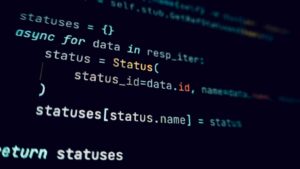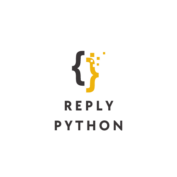 Linear programming is a powerful mathematical tool used to optimize complex problems by finding the best possible solution. In the realm of programming, Python has emerged as a popular choice for implementing linear programming algorithms due to its simplicity and versatility. By leveraging Python’s rich set of libraries and intuitive syntax, developers can efficiently tackle optimization challenges in various industries such as finance, logistics, and manufacturing.
Linear programming is a powerful mathematical tool used to optimize complex problems by finding the best possible solution. In the realm of programming, Python has emerged as a popular choice for implementing linear programming algorithms due to its simplicity and versatility. By leveraging Python’s rich set of libraries and intuitive syntax, developers can efficiently tackle optimization challenges in various industries such as finance, logistics, and manufacturing.
In this article, we’ll explore how Python can be utilized to formulate and solve linear programming problems, providing step-by-step guidance and practical examples. Whether you’re a seasoned programmer looking to enhance your optimization skills or a beginner eager to delve into the world of linear programming, this guide will equip you with the knowledge and tools needed to harness the power of Python for solving complex optimization problems.
Linear Programming Python
Linear programming is a powerful mathematical tool used to optimize complex problems by identifying the most efficient solution. Python stands out as a popular choice for implementing linear programming algorithms across various industries like finance, logistics, and manufacturing. Let’s delve into the essentials of linear programming in Python and explore the key libraries and tools that make it a preferred option for optimization tasks.
The Basics of Linear Programming
Linear programming involves maximizing or minimizing a linear objective function subject to linear equality and inequality constraints. It aims to find the best possible outcome in a given mathematical model, making it crucial for decision-making processes. In Python, this technique allows users to define decision variables, set constraints, and maximize or minimize the  objective function efficiently.
objective function efficiently.
- PuLP: PuLP is a popular open-source linear programming library in Python that provides a user-friendly interface for modeling linear programming problems. It offers flexibility in constructing linear programs and supports various solvers, making it ideal for optimization tasks.
- SciPy: SciPy is a scientific computing library that includes modules for optimization, linear algebra, integration, interpolation, and other mathematical tasks. It provides a range of optimization algorithms, including linear programming, making it a valuable resource for implementing optimization solutions in Python.
- CVXPY: CVXPY is a domain-specific language for convex optimization embedded in Python. It enables users to formulate convex optimization problems in a natural syntax, simplifying the implementation of linear programming and other optimization techniques.
By leveraging these key libraries and tools, Python users can efficiently implement and solve linear programming problems, facilitating better decision-making and optimization processes across various industries.
How Linear Programming Solves Problems
Linear programming in Python efficiently solves complex optimization problems in industries like finance, logistics, and manufacturing by maximizing or minimizing linear objective functions while meeting linear constraints. Essential libraries such as PuLP, SciPy, and CVXPY simplify the implementation of linear programming and other optimization techniques in Python, enabling the definition of decision variables, constraint setting, and objective function optimization to enhance decision-making processes.
Examples of Practical Applications
- Finance: Linear programming in Python aids in portfolio optimization for maximizing returns while managing risk within specified constraints.
- Logistics: Optimizing transportation routes to minimize costs and increase efficiency using linear programming algorithms in Python.
- Manufacturing: Efficient allocation of resources in production processes to maximize output and minimize costs through linear programming techniques.
 Flexibility: Python’s versatility allows for easy modeling and faster implementation of linear programming solutions.
Flexibility: Python’s versatility allows for easy modeling and faster implementation of linear programming solutions.- Scalability: Linear programming in Python can handle large-scale optimization problems efficiently.
- Accessibility: Python’s open-source nature provides a wide range of libraries and resources for linear programming tasks.
- Complexity: Formulating real-world problems into linear programming models can be challenging.
- Sensitivity to Data: Linear programming solutions are sensitive to changes in input data, requiring careful validation and verification.
- Performance: Achieving optimal solutions for highly complex problems may require advanced algorithms and computational resources.
Python’s robust libraries like PuLP, SciPy, and CVXPY have revolutionized linear programming, offering unparalleled flexibility and scalability in optimizing complex objective functions with constraints. Setting up the right environment is crucial for success in tackling real-world problems across various industries. By incorporating advanced algorithms such as the interior point method and simplex method, Python enables efficient handling of large-scale linear programming tasks.

